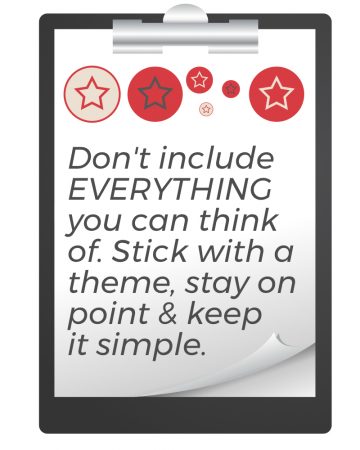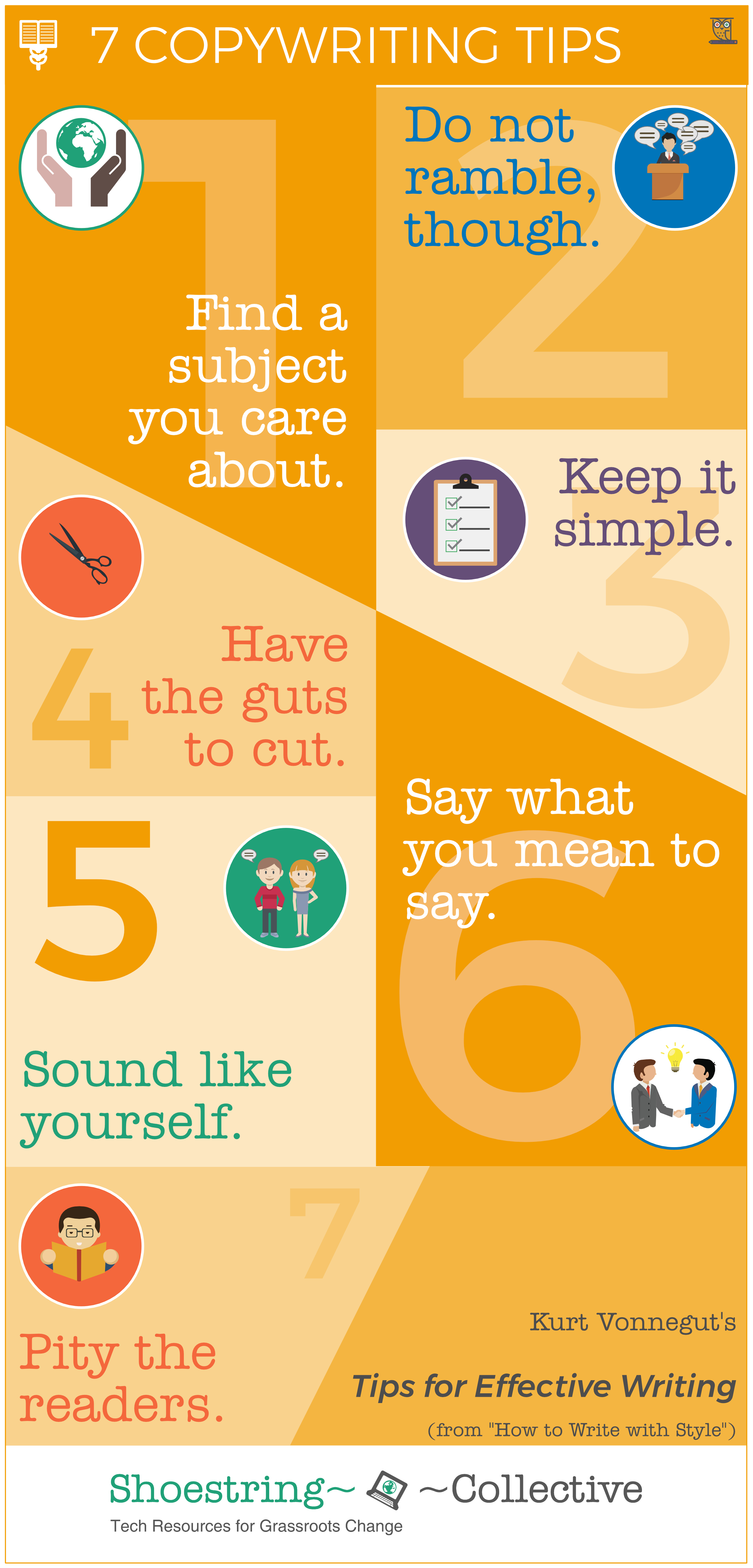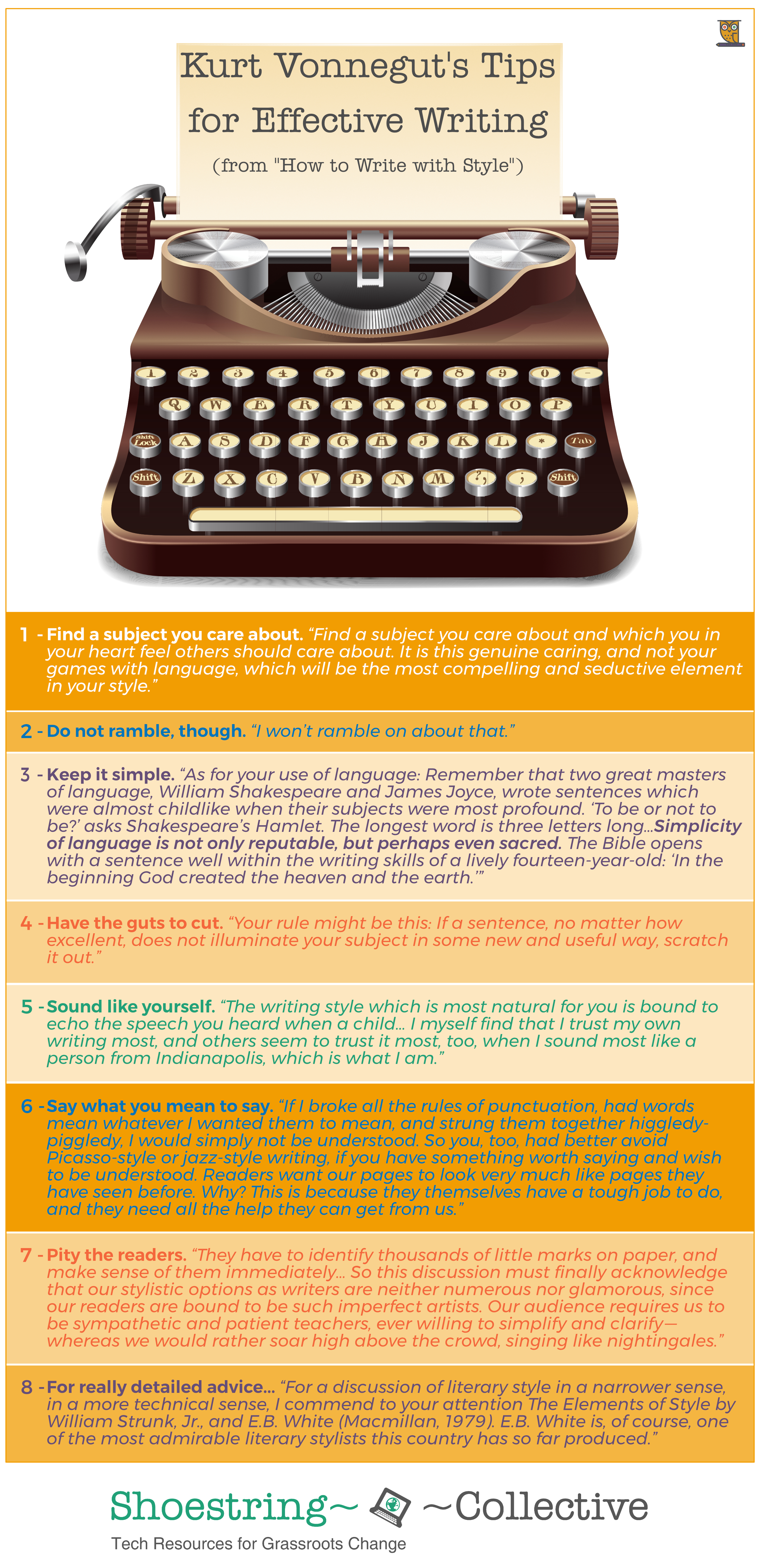Kurt Vonnegut’s Tips for Effective Writing
hidden for layout purposes
(from “How to Write with Style“)
Collapse All
1. Find a subject you care about.
“Find a subject you care about and which you in your heart feel others should care about. It is this genuine caring, and not your games with language, which will be the most compelling and seductive element in your style.”
Whether you’re composing a sales letter, writing a blog article, or sculpting a landing page, if you’re not passionate about the product or service you’re selling, it will come through in your copy.
[Click here to close]
2. Don't ramble, though.
“I won’t ramble on about that.”
Good copy is concise. Don’t use three words when one will do.
[Click here to close]
3. Keep it simple.
“As for your use of language: Remember that two great masters of language, William Shakespeare and James Joyce, wrote sentences which were almost childlike when their subjects were most profound. ‘To be or not to be?’ asks Shakespeare’s Hamlet. The longest word is three letters long… Simplicity of language is not only reputable, but perhaps even sacred. The Bible opens with a sentence well within the writing skills of a lively fourteen-year-old: ‘In the beginning God created the heaven and the earth.’”
Good copy is also clear. Don’t make the reader think. Your message should be easy to understand. If it’s not, you run the risk of losing your prospect. So, how can copywriters keep their message simple?
- Use short, succinct, understandable words.
- Use short, succinct, understandable sentences.
4. Have the guts to cut.
“Your rule might be this: If a sentence, no matter how excellent, does not illuminate your subject in some new and useful way, scratch it out.”
It doesn’t matter how beautiful your sentence is, if it doesn’t speak to your target audience and make the reader crave the next sentence, it’s probably best to delete it. A copywriter’s end goal is to fluidly move prospects down the page until they reach a call-to-action, which, then, asks them to move on to the next step of the buying process. Fluff will only serve to disrupt that process. And that negates the whole purpose of copy. So go ahead, cut.
[Click here to close]

5. Sound like yourself.
“The writing style which is most natural for you is bound to echo the speech you heard when a child… I myself find that I trust my own writing most, and others seem to trust it most, too, when I sound most like a person from Indianapolis, which is what I am.”
Write naturally. Be authentic. Pick a persona to target and write as if you’re speaking to that one individual and no one else. Sound like yourself and the copy will take on a unique, one-of-a-kind tone. Nobody expects you to sound like a banker if you are running a non-profit helping immigrants, for example.
[Click here to close]
6. Say what you mean to say.
“If I broke all the rules of punctuation, had words mean whatever I wanted them to mean, and strung them together higgledy-piggledy, I would simply not be understood. So you, too, had better avoid Picasso-style or jazz-style writing, if you have something worth saying and wish to be understood. Readers want our pages to look very much like pages they have seen before. Why? This is because they themselves have a tough job to do, and they need all the help they can get from us.”
Good copy is, first and foremost, understood. That’s why good, conversion-driven copywriters won’t be caught dead distracting readers with fluff. Respect your readers’ time. Minimize their cognitive expenditure.
[Click here to close]
7. Pity the readers.
“They have to identify thousands of little marks on paper, and make sense of them immediately… So this discussion must finally acknowledge that our stylistic options as writers are neither numerous nor glamorous, since our readers are bound to be such imperfect artists. Our audience requires us to be sympathetic and patient teachers, ever willing to simplify and clarify — whereas we would rather soar high above the crowd, singing like nightingales.”
You may be a wordsmith and an artist. Your prose may sing. And that’s great … but it doesn’t make it okay to write wordy copy. Successful copywriters know that long-winded copy won’t get the job done. It’s all about being clear and concise because catering to the reader will be rewarded with trust, credibility, and action. So do your readers — and yourself — a favor: Show mercy.
[Click here to close]
8. For more detailed advice...
“For a discussion of literary style in a narrower sense, in a more technical sense, I commend to your attention The Elements of Style by William Strunk, Jr., and E.B. White (Macmillan, 1979). E.B. White is, of course, one of the most admirable literary stylists this country has so far produced.”
Always provide readers with value. Fail to do so and all the other rules on this list become obsolete. Value is born when your copy solves a specific problem for your reader. Or when it assuages a fear. Or when it meets a desire.
Informative content is valuable. So is entertaining content. Ultimately, providing value is fundamental to the success of any piece of copy because in its absence, what’s there to care about?
So next time you sit down to write your next blog article or sales letter or landing page, ask yourself: “Who’s this for? What do they want or need?” And, perhaps: “What would Kurt do?”
[Click here to close]


